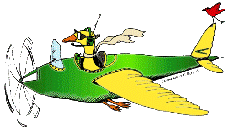Bird Strike Committee Proceedings
Date of this Version
October 2002
Abstract
Raptor translocation from airport environments is a management strategy that has been recommended and used in attempts to reduce aircraft strikes. However, supportive data are lacking about optimal translocation distance and direction, return rate, post-translocation fate and overall efficacy of the technique. We conducted a study from 1 December 1999 to 28 February 2002, which included satellite telemetry, to address these issues of raptor translocation at a Midwest Airport. Two hundred and fourteen red-tailed hawks (Buteo jamaicensis) were translocated to 12 sites in Illinois, between 59 and 242 km from the airport. Thirty-four after-hatch-year (AHY) individuals were fitted with satellite (PTT, n = 22) or VHF (n = 12) transmitters. As of 31 October 2001, 34 (15.9%) of the 214 red-tailed hawks returned to the airport. We compared the return rate among age class, period of translocation (i.e., breeding, fall and spring migrations, and over wintering), direction of translocation, and translocation distance. Only 3.2% (3 of 93) of hatch- year (HY) individuals returned, whereas 25.6% (31 of 121) of AHY birds returned (P < 0.001). HY red-tailed hawks were also easiest to capture and least likely to return. No differences among the other factors were identified. The mean number of days to return was 108.6, range 2-369. Satellite data indicated that 19 of the 22 (86.3%) PTT-fitted birds dispersed from the release site within 5 days, suggesting that translocation did not result in an over-saturation of individuals at the release sites. Use of airport habitats by PTT-fitted birds was significantly different (P = 0.009). However, this was probably due to a single individual being relocated on airports 43 of 125 times (34.4%). Excluding this individual eliminated statistical significance (P = 0.576). Although PTT-fitted birds used airport habitats greater than expected, average use was extremely low, <2%.

